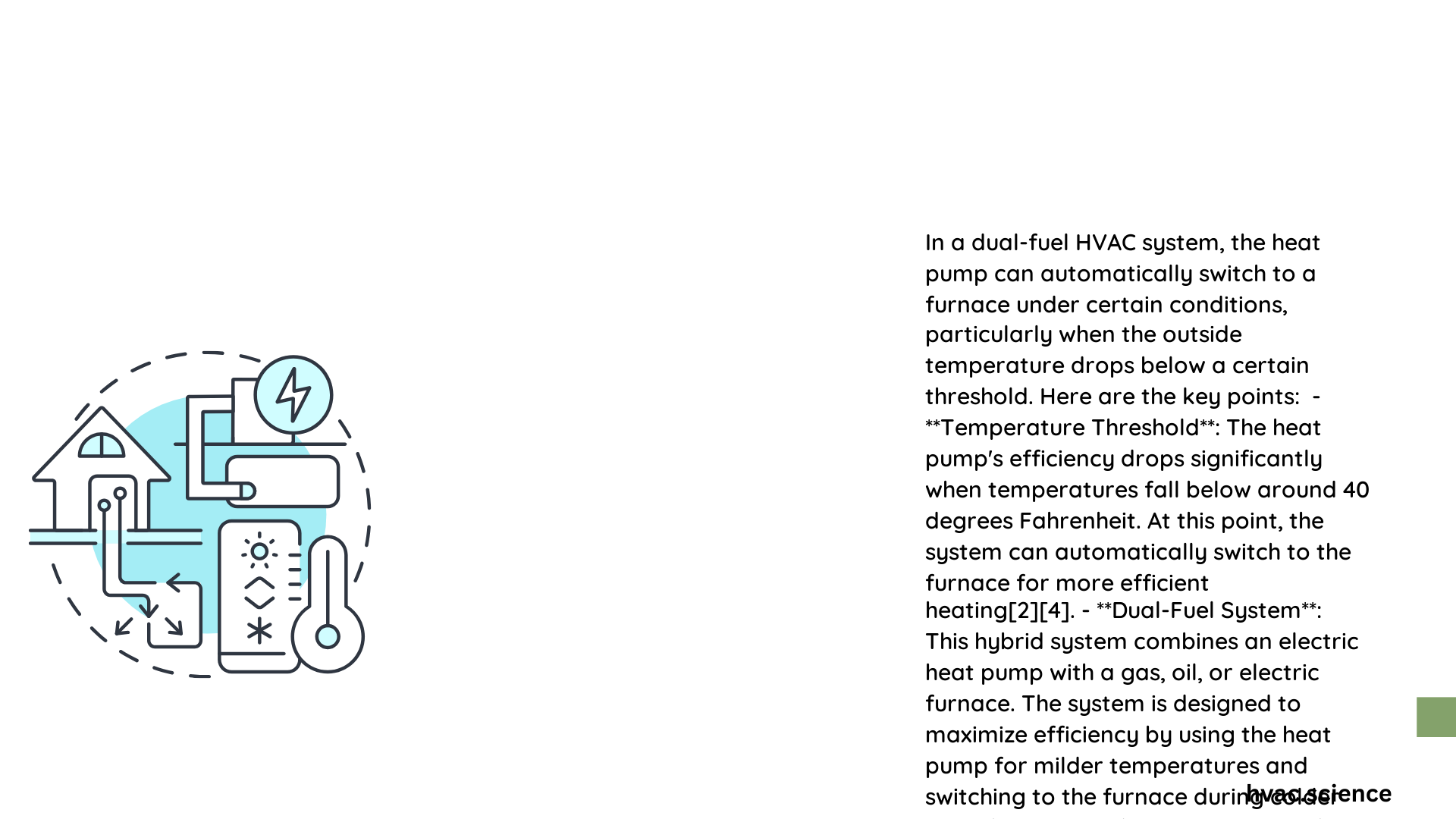Heat pumps are sophisticated heating systems designed to intelligently manage temperature transitions. When outdoor temperatures drop below a specific threshold, typically between 25°F to 35°F, these systems can automatically activate auxiliary heating sources like furnaces. This automatic switching mechanism ensures consistent indoor comfort while optimizing energy consumption and maintaining optimal temperature control.
What Triggers Automatic Switching in Heat Pumps?
How Do Temperature Sensors Detect Switching Conditions?
Heat pumps utilize advanced temperature sensing technologies to determine when to transition from primary heat pump operation to auxiliary heating modes. Key detection mechanisms include:
- Outdoor Temperature Sensors
- Monitor ambient temperature continuously
- Trigger switching when temperatures fall below preset thresholds
-
Typically activated between 25°F to 35°F
-
Thermostat Programmed Settings
- Allow customizable temperature transition points
- Enable manual and automatic switching configurations
- Provide precise control over heating strategies
What Are the Primary Switching Mechanisms?
| Switching Mechanism | Temperature Range | Activation Method |
|---|---|---|
| Standard Heat Pump | 35°F – 45°F | Gradual auxiliary heat engagement |
| Emergency Heat Mode | Below 25°F | Immediate full auxiliary heating |
| Adaptive Switching | Variable | Smart sensor-based transitions |
Why Do Heat Pumps Need Auxiliary Heating?
Heat pumps become less efficient in extremely cold temperatures. When outdoor temperatures drop significantly, the system’s ability to extract heat from external air diminishes. Auxiliary heating sources like gas furnaces or electric resistance heaters provide supplemental warmth to maintain indoor comfort.
Technical Insights into Heat Pump Switching

How Does the Switching Process Work?
The automatic switching process involves multiple sophisticated components:
- Temperature Monitoring
- Continuous outdoor temperature tracking
-
Real-time data transmission to central control system
-
Threshold Evaluation
- Compare current temperature against predefined limits
-
Determine optimal heating strategy
-
Seamless Transition
- Gradual engagement of auxiliary heating
- Minimal disruption to indoor temperature
What Factors Influence Switching Performance?
Several critical factors impact heat pump switching effectiveness:
- System Age and Maintenance
- Insulation Quality
- Regional Climate Conditions
- Thermostat Sophistication
- Heat Pump Model Specifications
Energy Efficiency Considerations
Can Automatic Switching Save Energy?
While auxiliary heating can increase energy consumption, modern heat pumps incorporate intelligent switching algorithms that minimize unnecessary energy expenditure. Advanced systems utilize:
- Predictive temperature modeling
- Adaptive learning algorithms
- Efficient transition protocols
Maintenance and Optimization Tips
How to Maximize Heat Pump Performance?
- Regular professional maintenance
- Annual system inspections
- Calibrate thermostat settings
- Upgrade to smart temperature controls
- Ensure proper home insulation
Potential Limitations and Challenges
What Are the Potential Switching Drawbacks?
- Increased energy costs during extreme cold
- Potential system wear from frequent transitions
- Complex maintenance requirements
- Higher initial installation expenses
Conclusion
Automatic heat pump switching represents a sophisticated approach to home heating, balancing comfort, efficiency, and technological innovation. Understanding these mechanisms empowers homeowners to make informed decisions about their heating systems.
Professional Recommendations
- Consult HVAC professionals for personalized advice
- Invest in high-efficiency heat pump models
- Regularly update system configurations
